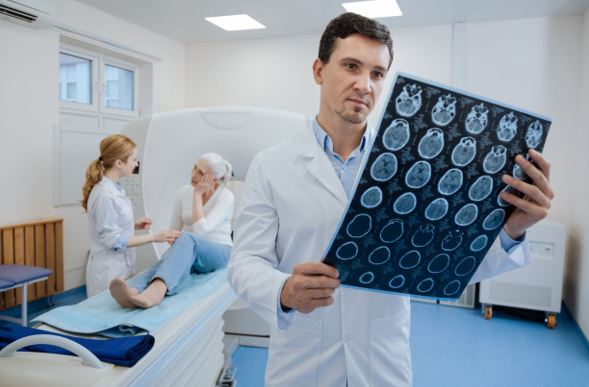Progressive muscle atrophy is the main characteristic of inflammatory myopathies. Acquired and congenital myopathies (muscular dystrophies) are two common disorder types. These disorders gradually lead to muscle weakening and impairment of motor function. A genetic defect is one of the main myopathies causes.
An excess of thyroid hormones (thyrotoxicosis) and other endocrine disorders can also be the cause of endocrine myopathies. Acquired myopathies can develop because of other dangerous conditions, such as chronic intoxication (drug addiction, alcoholism), malabsorption and vitamin deficiency, severe chronic diseases (heart failure, hepatic insufficiency, liver failure), tumor processes. The therapy program is developed depending on what causes myopathies.

Symptoms and some features of the illness
No matter what causes myopathies, in most cases, muscle weakness is the main symptom. Muscles become thinner, their atrophy develops, as a result, of which there is a deformation of the skeleton.
Other common signs are seizures, myalgia, and fatigue. Muscle weakness most often affects the muscles of the thighs and arms, for example, it is difficult for patients to climb the stairs, get up from a seated position, sit or perform activities with raised arms. Muscle weakness can be accompanied by pain or cramping.
Some types of myopathies may affect the face or throat muscles. A drooping eyelid, decreased mobility of the eyeballs, slurred speech, and difficulty with swallowing are the common symptoms. In some cases, the respiratory muscle may weaken, leading to shortness of breath. Sometimes patients have problems with muscle relaxation. In addition, myopathies can be accompanied by severe weakness of the facial muscles. The damage of the circular muscle of the mouth is accompanied by the development of dysarthria due to the difficulty of the pronunciation of vowels.
Treatment strategy
Curing tactics of hereditary myopathies are mainly aimed at correcting metabolism in the nervous and muscle tissues. Palliative treatment is usually indicated for patients with different illness types, including endocrine myopathies. Therapy key goals are:
- restoring the balance of the autonomic nervous system;
- partial restoration of neuromuscular transmission;
- metabolic recovery;
- slowing the progression of muscle atrophy.
To manage muscle tissue disease, a special therapy plan is developed by a medical specialist, including the appointment of drugs, vitamins, biogenic stimulants, potassium preparations, anticholinesterase drugs, vasoactive medications, etc.
In the treatment of acquired myopathies, this therapy is also used, however, the main emphasis is on eliminating the underlying condition. The choice of treatment method depends on the form and manifestation of the disease.
In addition to medication, physiotherapy can also be applied. Special exercises, massage, electrophoresis can strengthen muscles and improve metabolism in muscle tissue. In case of the poor pronunciation of words, mumbling, or a change in speed or rhythm during talking, a speech therapist’s assistance may be required.
Is it possible to completely heal the muscles?
There is no effective therapy that can completely cure the patients, so treatment is mainly supportive despite the illness type and the reason what causes myopathies. In inflammatory myopathies, muscle strength is usually restored partially after starting treatment. And in endocrine myopathies caused by hormonal disorders, muscle symptoms usually disappear after the underlying disorder is cured.

